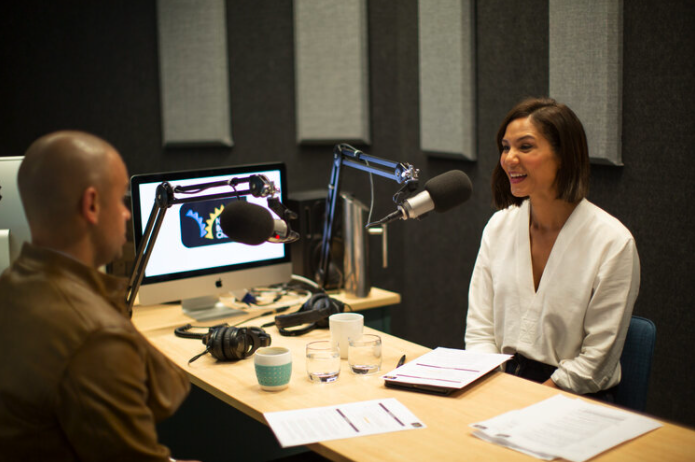Brand storytelling is the use of authentic, emotional stories by an organisation to drive growth and foster customer loyalty.
It represents a new era of integrated marketing communications where brand-funded content is integrated across a variety of media channels and go-to-market activities operated by an organisation.
This can include social media, content marketing, SEO, SEM, public relations (PR), advertising, video, events, brand strategy, messaging and sales collateral.
Brand storytelling in a nutshell
The best brand storytelling campaign or owned media channel looks to deliver a single message or story narrative consistently across multiple channels.
Brand storytellers look to achieve the right balance between an audience-centric approach to the story and commercial objectives. These objectives could include raising brand awareness, changing consumer perceptions, and increasing revenue.
The organisation’s brand storytelling chief typically occupies a marketing, communications or strategy role, giving them the ability to balance these competing demands and achieve the required outcomes.
Why brand storytelling is growing?
Changing consumer habits are driving the growth of brand storytelling strategies. Consumers are mobile device-centric, actively avoid interruption-based advertising, and choose from a wide variety of information and entertainment sources.
Importantly, consumers are engaging with brand-funded media that offer high-quality, informative and entertaining content experiences.
According to a survey conducted by US individualisation platform, OneSpot:
- 68% of consumers find content that ‘informs’ and ‘educates’ most valuable
- 17% of consumers find content that ‘entertains’ most valuable; and
- 11% of consumers find content that ‘inspires’ most valuable.
We’ve known since the 1980s that the average human processes images and videos 60,0000 times faster than text. But as communications become increasingly more digitally-focussed and as consumer attention spans shorten, we see a growing opportunity to engage with audiences through powerful visual brand storytelling means.
According to an Aberdeen Group study, organisations use video content as part of their marketing strategy benefit from 41% more web traffic from search.
Consumers no longer default to mainstream content and news providers, instead rely on a mixture of social filters, niche content providers, software aggregators and social media to stay connected and entertained.
Augmented Reality and Virtual Reality platforms are also entering mainstream experimentation, fuelling the rise of brand storytelling as companies use this technology as a new way of engaging customers.
According to YouVisit’s Virtual Reality Brand Power Index, 75 per cent of Forbes World’s Most Valuable Brands have used VR or AR to create some form of immersive customer experience, or are “themselves innovating and developing these technologies”.

11 great examples of brand storytelling
- Coca-Cola Journey
- Adobe CMO.com
- Telstra IN:SIGHT, Exchange, Smarter Business
- GE Reports
- Red Bull Media House
- Marriott Moxy Hotels “Do No Disturb” web series
- Patagonia Nevertown film
- Always Like A Girl campaign
- Stories from the Airbnb Community
- Nike Equality campaign
- Dove Campaigns
The science of storytelling
The power of storytelling to entertain, inform and persuade is well documented.
Scientists have discovered that when we listen to a story being told most parts of our brain light up, or are engaged. That biological activity stands in contrast to more staid methods of information consumption, such as listening to a person recite facts, which only light up two discrete sections of the brain known as the Broca’s area and Wernicke’s area.
The appeal of storytelling is more extensive to our brains, with the following typically experienced during a story:
- Mirroring: Our brain patterns align with those of the speaker.
- Neural coupling: The brain begins to turn the story into the listener’s own ideas and experiences.
- Dopamine: The pleasure drug! This emotion-charger responds to the story and helps us remember facts associated with the emotions of the story.
Beliefonomics: the brand storytelling framework
After careful study of the science and art of storytelling, Filtered Media’s chief storyteller and CEO Mark Jones developed a unique perspective on brand storytelling that brings it all together for organisations looking to bring their storytelling vision to life.
Beliefonomics is a framework that combines two core ingredients in the storytelling journey.
- Consumers carry deeply-held beliefs, from the political, religious and self-oriented, or existential.
- The changing economics of media, technology and marketing disruption are forcing marketers and communications professionals to challenge the status quo.
Beliefonomics sits at the intersection of these forces. As Mark Jones explains in keynotes and workshops, a powerful story will only move us along the belief journey when we properly understand the influence of these beliefs and changing economic demands.

Ready to increase your impact?
At ImpactInstitute, we help commercial and social sector organisations across Australia create measurable impact with stories that matter. Contact us if you’d like to discuss how we can help your organisation tell your stories.
Written by: Mark Jones.
For more information visit: Brand Storytelling, Communications & Marketing
